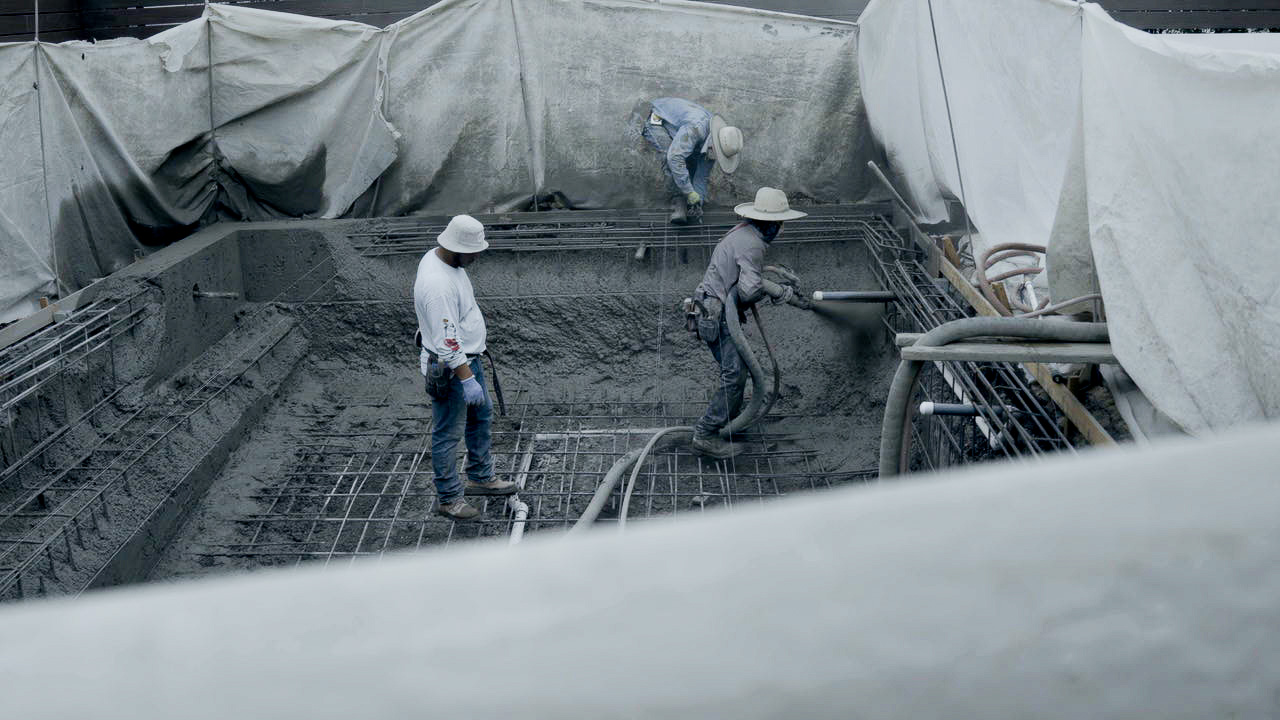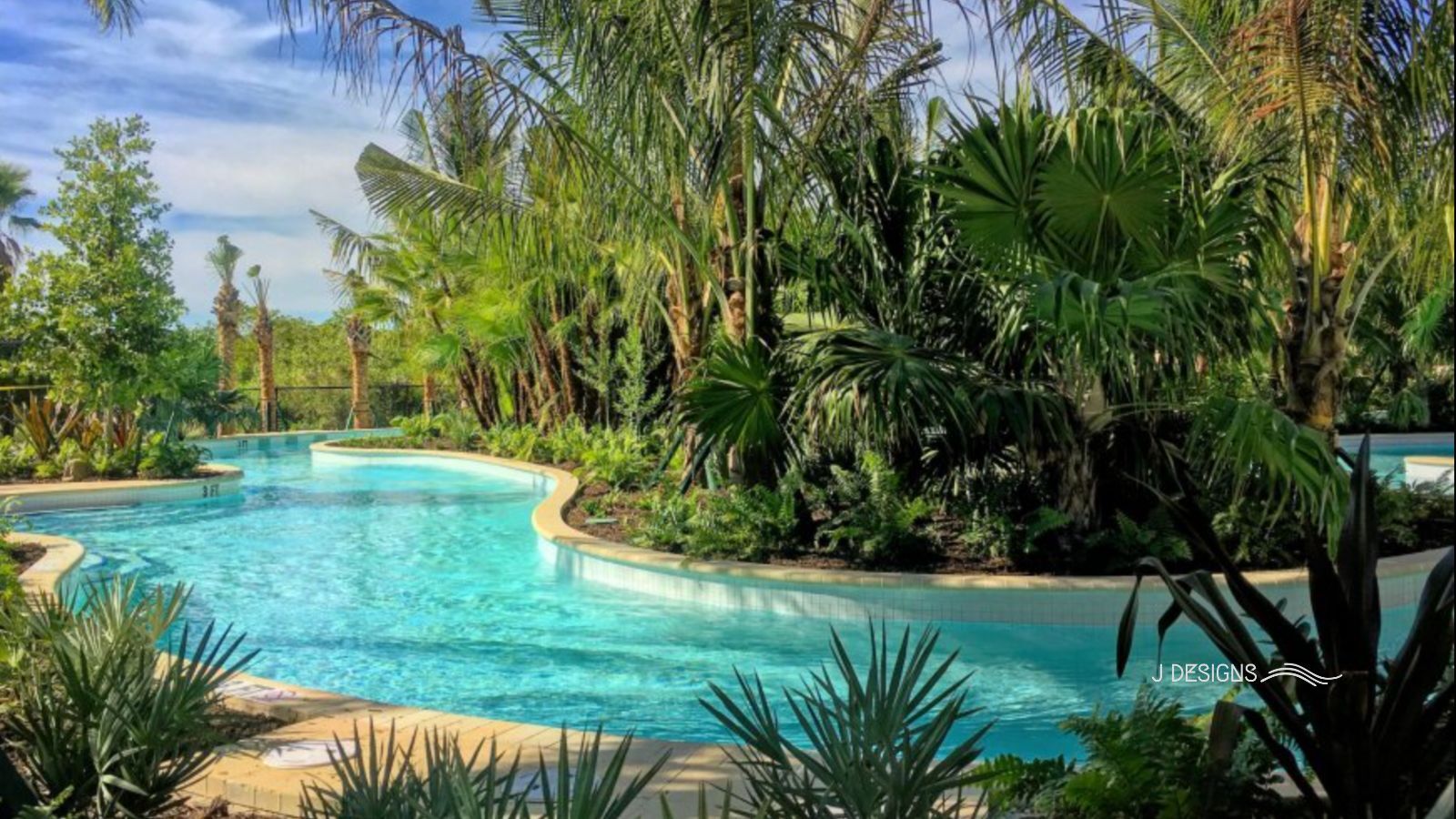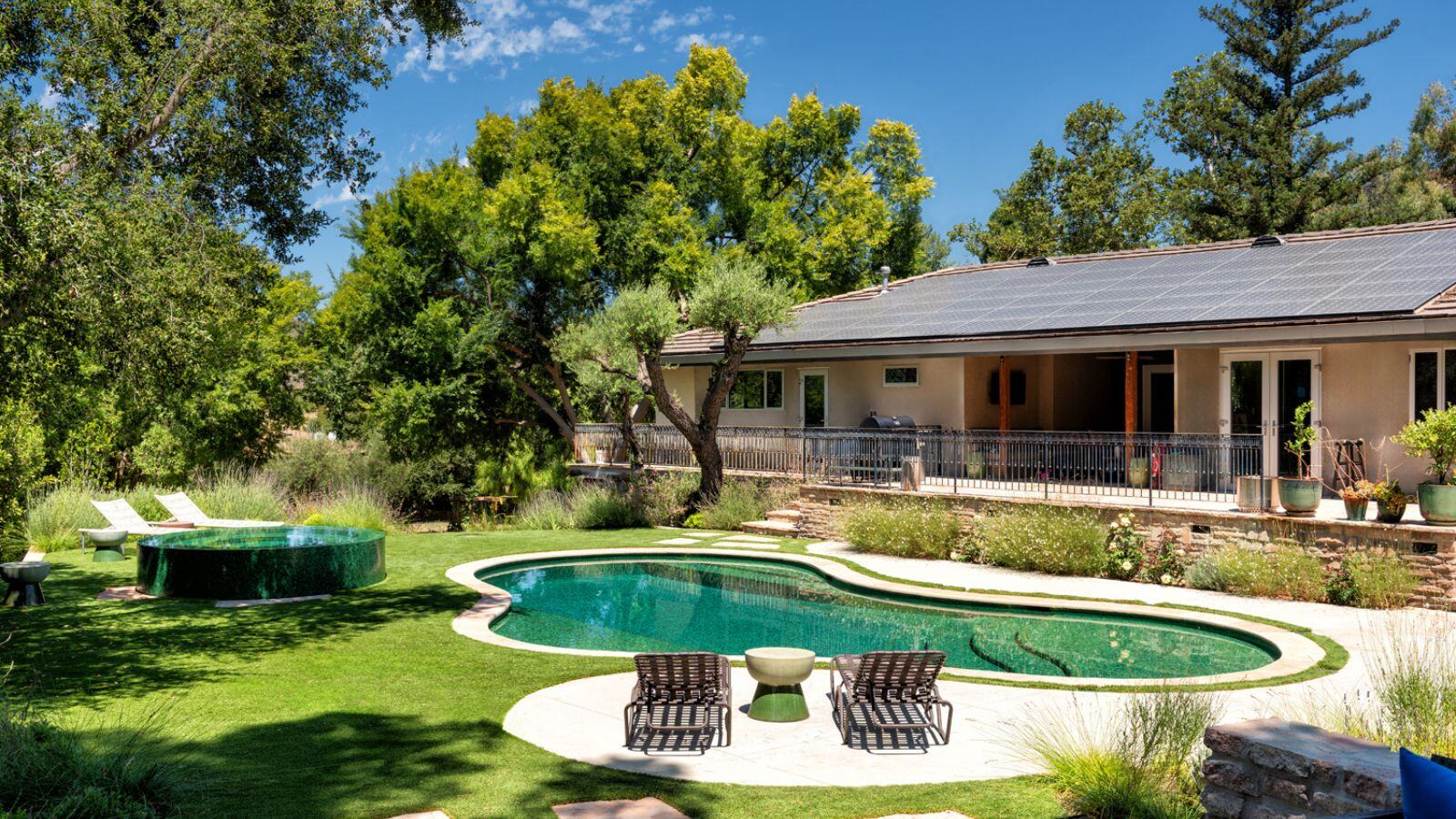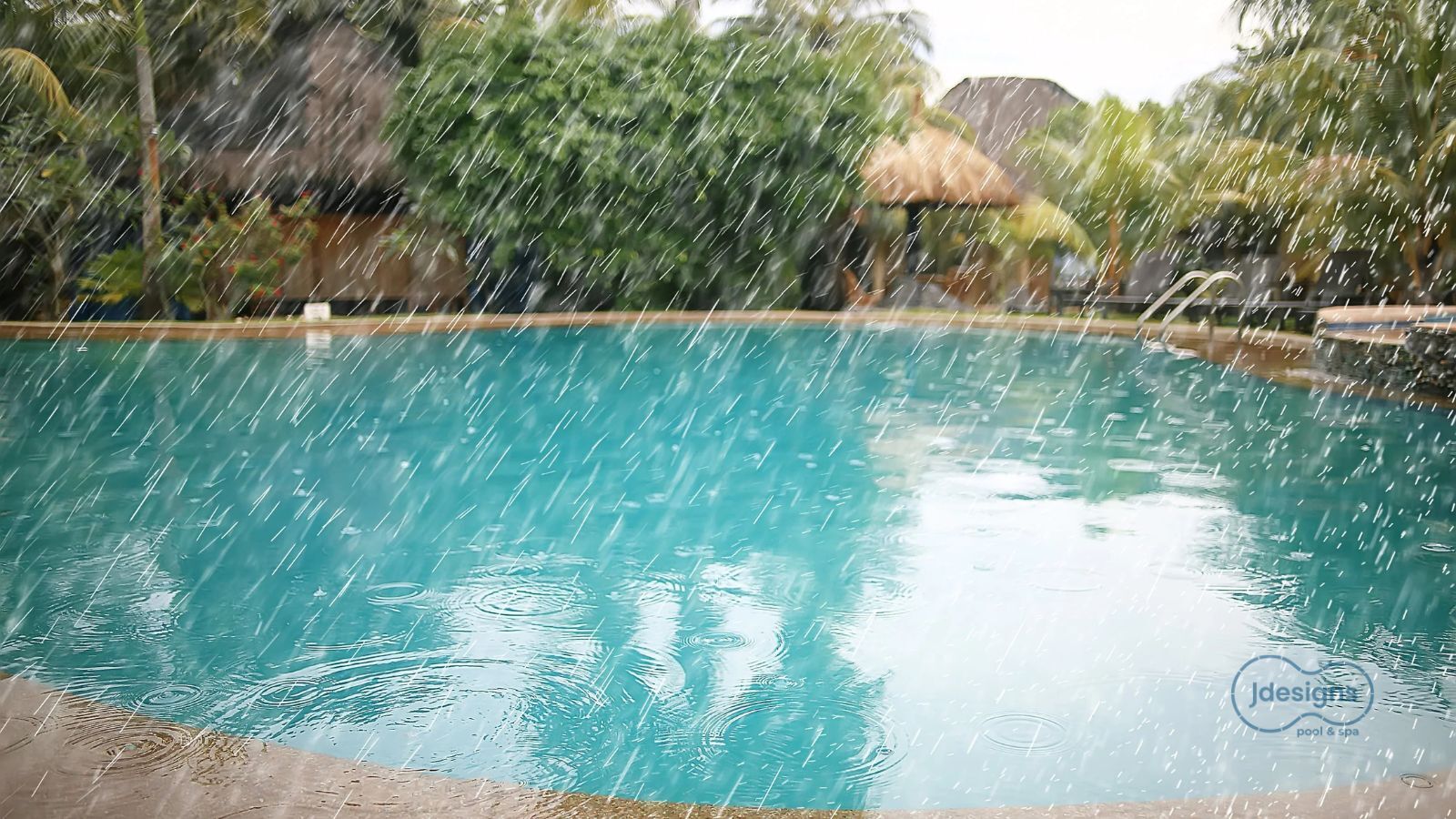Residential Lazy River Cost & Design Guide
Imagine floating effortlessly through your own backyard oasis on a warm afternoon.
4 min read
Daniela Escudero
:
Updated on June 17, 2024

You will hear about shotcrete and gunite as you learn about concrete pools.
What is shotcrete? What is gunite? Are they different brands of concrete? How will they be used?
Keeping up with all of this terminology during your research can be overwhelming, especially when dealing with many other factors in making the pool of your dreams.
At J Designs, we have a 14-year career working with shotcrete and gunite to install concrete pools. During that time, we pointed out the differences for our clients and explained how using either can result in a high-quality pool.
By the end of this article, you will know what they are, the differences between the two, their pros and cons, and how they’re applied.
Let’s get started!
Shotcrete is a concrete formula made in the concrete plant and transported to the job site to be applied (wet mix) or a dry mix combined with on-site water sprayed at the end of the nozzle (dry mix).
The term “shotcrete” represents the action of both mixes being shot out of the end of the hose. Once the shotcrete is applied, it is carefully molded and shaped to the specifications of your pool.
“Gunite” is simply a trade name used to describe dry shotcrete mix, again because of the action of shooting it out of a hose, like a gun. Get it?
So, shotcrete is an adjective, not a noun.
Wet mix shotcrete is a specially designed concrete mix already pre-made in a plant or factory with proper water concrete ratios and then transferred to your property in a cement truck.
It has been the most popular among homeowners and pool builders. However, that doesn’t mean that it’s not without its drawbacks.
Let’s break it down.
Wet shotcrete already comes pre-made from a plant, which is a controlled environment. There, it is mixed by trained professionals who use up-to-date technology to ensure that the right amounts of sand, cement, and other additives are included. That way, there is no error in mixing.
Because wet shotcrete is carried by trucks, there is no messy material transfer to your pool area.
Also, because the wet shotcrete already comes pre-mixed, it doesn’t have to be hand-mixed and hydrated with water at the site, like gunite, so the application time is much shorter. The crew grabs the hose, and they’re ready to go.
Wet pre-mixed shotcrete must be applied quickly, usually in one session, especially in warmer temperatures. In excessive heat, the hydration from the water mixed with the cement will evaporate too quickly, making the shotcrete harder to mold and adhere to concrete that’s already dried.
Water should not be added, or the concrete formula gets diluted, eventually weakening the concrete.
Have you ever left wet Play-Dough in the hot sun? It's not so much fun to play with afterward.
Wet shotcrete usually has a 90-minute transfer time from when the truck is filled to when it is applied, which should never be on scorching days. Any delays in truck arrival could result in a halt to the shotcrete application and a significant setback to your pool building.
The application of wet shotcrete is not like icing a cake. There’s room for error with buttercream, but not with shotcrete.
It has to be done once and done correctly. So you have to rely on the expertise of your nozzleman (yes, that is a title). They have to be certified by the American Shotcrete Association (yes, that is an association).
Because of the shorter time window, wet shotcrete tends to be more expensive than gunite.
Gunite or dry mix was trendy when it was first created and has gained more popularity in the pool-building industry since then.
This shotcrete mix constitutes a pre-mixed dry concrete material brought onsite and fed through a hose, just like wet shotcrete mix would. The only difference is that a nozzle is attached where water is added. That way, the concrete mix is hydrated and sprayed right after being applied to the final surface.
Also, gunite requires more equipment, such as mixing equipment, conveyor belts, and even backhoes, to dump materials in large mixing hoppers, which feed the materials through the hose.
Gunite is less time-sensitive than wet shotcrete, so the application allows more time.
A more extended period to get your pool might not sound like a plus. Still, with gunite, builders can ensure the material is appropriately molded to specifications and seamed perfectly. More time could equal fewer errors.
Because the concrete is hydrated with water at the site, the material is fresh and dries reasonably quickly.
Unlike wet shotcrete, which is measured and mixed beforehand, gunite has to be measured and mixed at the site, which makes it more subject to human error. To have the correct water and dry mix ratios, gunite requires a more experienced crew to supervise.
If too much water is added to the dry mix, it will not cure correctly and result in a weaker shell for your pool.
Gunite application can also be a lot messier than wet shotcrete. The hose sprays at a high velocity, and any excess material can get everywhere. This is known as “rebound,” the clean-up can be a disaster.
Last is the enormous logistics. For gunite, you need to have 5-6 ten-wheelers on the street and also pallets of cement or silos on trailers with the cement. This renders any street unusable for pedestrians and causes traffic jams, inconveniencing commuters.
Some cities have even banned this method due to the large amount of cleanup the city has to do after the crew has left.
As mentioned before, both gunite and shotcrete share a similarity in the fact that they are both shot out of a hose directly onto the pool foundation.
While gunite creates a heavier hose and gives more volume when sprayed, both mixes are densely packed. They need a team of certified and skilled technicians to sculpt the material seamlessly, ensuring no cracks or bubbles. It must all be a consistent finish.
Properly applied, a shotcrete pool can last up to 50 years without wear and tear. It will give a watertight and durable shell when appropriately installed.
The wrong application will result in uneven floors and cracking in your foundation, allowing for potential leaks and structural damage.
Now you know the differences between wet and dry mix shotcrete (gunite) applications. We covered the benefits and drawbacks of each and how they are applied to your pool.
By reading this article, you have a deeper understanding of the pool construction process and the tools you need now to help you make important decisions later.
Ultimately, the decision on what application to use rests with your contractor. After all, they are the experts. Certain factors go into how they want the shotcrete applied, such as what kind of pool you are looking to build, the time frame, and the resources that they have available.
We have a 14-year history of working with wet and dry shotcrete applications at J Designs Pool and Spa. We can confidently say that both wet shotcrete and gunite applications, done correctly, will give you a high-quality pool that can stand the test of time.
If you still have any questions about wet or dry shotcrete and would like to speak with a team member, please visit our webpage and book an appointment now.
If you’ve got a good grasp of shotcrete but still want to learn more about pool construction, click these related articles for up-to-date information.
What Type of Plaster Is Right For Your Pool: Pros, Cons, and Comparisons
5 Common Mistakes First-Time Pool Buyers Make (And How To Avoid Them)
Epoxy Grout vs. Cement Grout: Which Is Best For Your Pool?

Imagine floating effortlessly through your own backyard oasis on a warm afternoon.

If you’re planning to build or remodel a pool in 2026, you’re not just choosing a “look”; you’re making a long-term investment in your home, your...

Pool Overflows After Heavy Rain and How to Lower Your Pool's Water Level